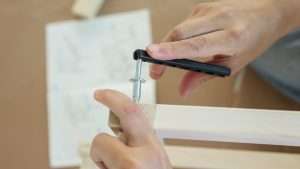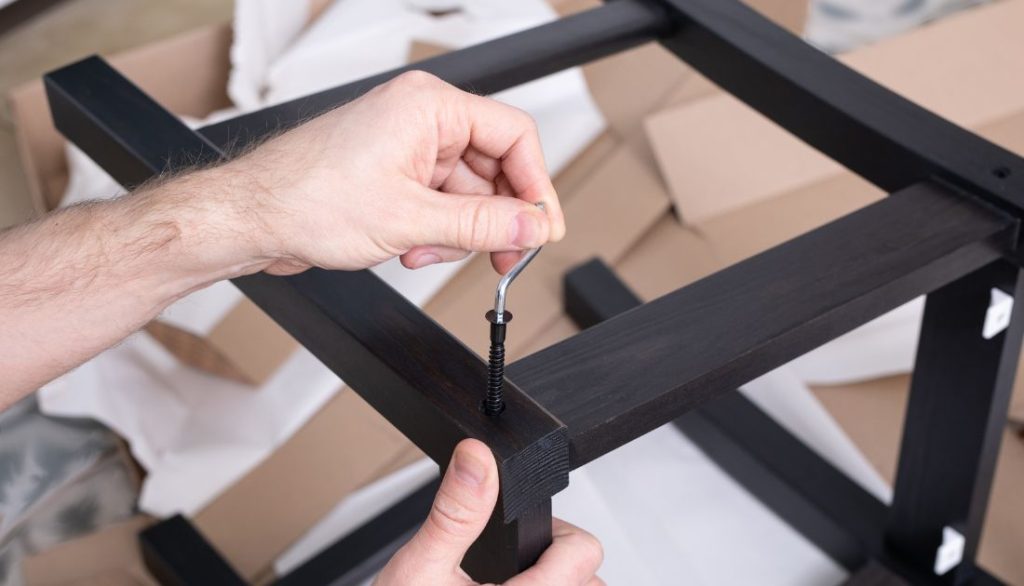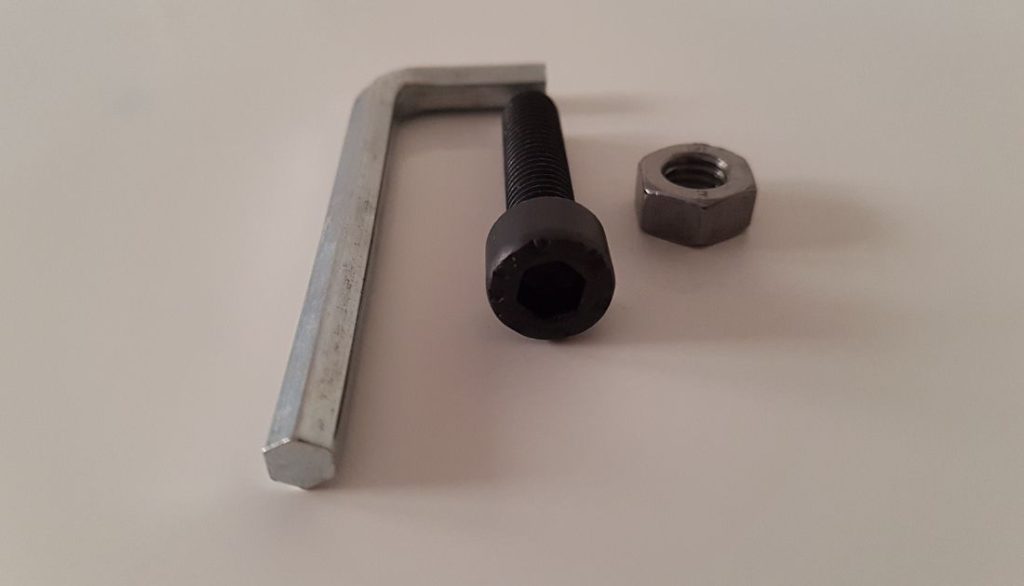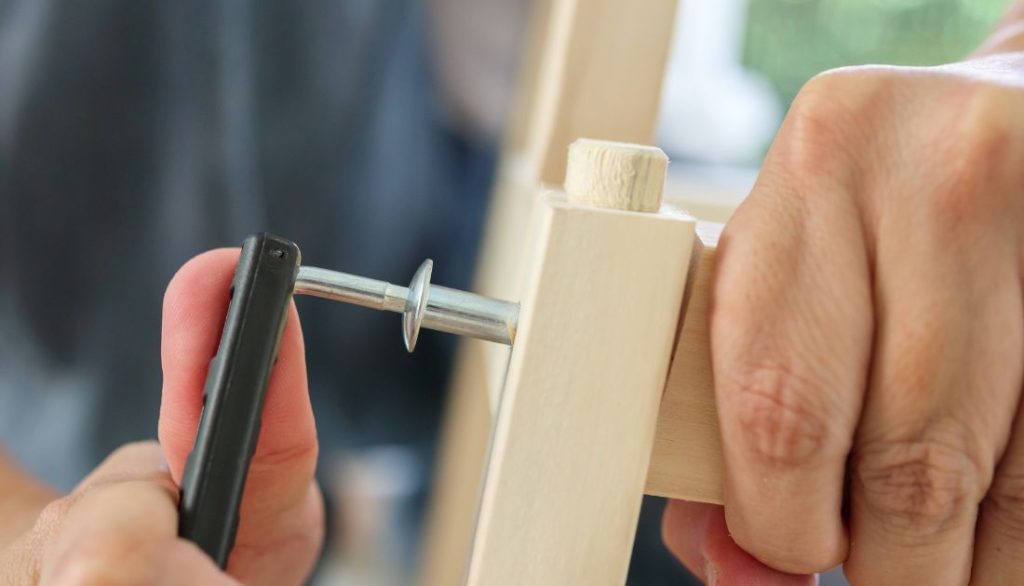Table of Contents
In the world of DIY home repairs and mechanical work, nothing is more frustrating than a stripped Allen screw. Whether you are trying to remove a bike pedal or tighten up an engine mount, all it takes is one tiny mistake to turn that sleek six-sided head into something mangled beyond recognition. But fear not, for removing a stripped Allen screw doesn’t have to be an exercise in frustration and anger management.
In this article we will guide you through some tried-and-true methods for getting that stubborn screw out. So get your tools ready, and let’s dive in!
Finding The Right Tool For The Job
When removing a stripped Allen screw, one of the most important things you can do is find the right tool for the job. Using proper tools can make the process more difficult and increase your chances of damaging surrounding parts and components. So before you begin, consider what type of head your stripped screw has and choose a compatible tool.
In addition to utilizing proper tools, it’s essential to approach the task with patience and care. Rushing or forcing things can lead to mistakes that further damage the screw or its surroundings. If an initial attempt doesn’t work, take a break and reassess before trying again with a different method or tool.
Successfully removing a stripped Allen screw requires careful planning and precise execution. Considering these steps, you’ll be well on your way to getting rid of that pesky bolt in no time.
Equipment
- Collection of Allen wrenches
- Assortment of T-handle hex wrenches
- Set of Torx wrenches
- Phillips head screwdriver
- Compact propane torch
- Needle-nose pliers
- Left-hand drill bit set
- A rotary tool with a metal cutting wheel
- Kit for extracting screws
Material:
- 1 rubber band or sheet of paper
- 1 bottle of screw-grab friction liquid
- 1 two-part epoxy
Method 01
1. Using A Rubber Band To Get A Grip
One effective method for removing a stripped Allen screw is to use a rubber band. Simply place the rubber band over the head of the screw and apply downward pressure as you turn your wrench or Allen key. The added friction from the rubber band helps to grip onto the damaged edges of the screw, giving you more torque and leverage to twist it free.
Another benefit of this technique is that it can often get done without resorting to specialty tools or complex procedures. It’s quick, easy, and accessible even if you don’t have access to a hardware store or specialized repair services.
So next time you face a stubborn stripped Allen screw, don’t panic – just grab a rubber band and get ready for real traction.
2. Tapping The Screwdriver Into Place

Tapping the screwdriver into place is a technique used to create enough friction between the tool and the stripped Allen screw head to loosen it. You will need a flat-head screwdriver with a broader blade than the screws’ width to do this.
Simply tap on the screwdriver lightly with a hammer until it’s wedged tightly within any remaining recesses of the hexagonal shape surrounding your stripped Allen bolt. Once securely in position, try turning or twisting leftward and rightward slightly while applying downward pressure toward whatever object needs loosening.
This challenging motion sometimes creates enough space for an opening grip (pliers or self-locking wrench). It is to secure around its grooves for an upward-reaching maneuver towards extraction. It includes like pulling it up from beneath after applying traction against opposing surfaces, such as with pliers against bolts protruding above their fixed point.
Lastly, patch any damage done using soldering iron, which specializes in metal bonding but won’t alter dimensions if only tiny scratches require attention before reinsertion elsewhere. Tapping helps immensely when removing stubborn screws.
Just don’t overdo force application. Stripping increases more easily under high-threshold stress levels, given how diplomatic ties are regarding torque limits set during manufacturing processes prior undertaken lately seen.
03. Applying Heat To Loosen The Stripped Allen Screw
One effective method for removing a stripped Allen screw is by applying heat. This technique involves using a torch or heat gun to warm up the surrounding area of the screw. It causes it to expand slightly and loosen its grip on the threading.
Once heated, you can use an Allen wrench or pliers to try and turn the screw counterclockwise. It’s important not to overheat the area, as this can damage nearby components or even melt plastic parts.
When implementing this technique, safety should be a top priority. Always wear protective eyewear and gloves while working with hot tools and materials.
Additionally, ensure that no flammable substances are nearby before applying heat to avoid potential fires or explosions.
Using a torch, keep moving around the screw rather than focusing directly on one spot for too long to distribute heat evenly across the surface area of interest.
Overall, applying heat can be an effective solution for removing a stripped Allen screw if done correctly with caution & attention paid to safety during each process step.
04. Using A Drill To Extract The Stripped Allen Screw

When removing a stripped Allen screw, one effective method is to use a drill.
- First, ensure that you have the correct size drill bit for your screw head. It will prevent any additional damage.
- Then, carefully position the drill on top of the damaged screw head and apply gentle pressure as you slowly begin drilling in reverse. The goal here is to create enough friction between the bit and the screw so that it starts turning opposite of its original direction.
- Switch to forward motion once you feel confident that you’ve created enough resistance with your drill. Continue drilling until the screw has been obliterated.
- Use pliers or other tools to carefully wiggle out any remaining fragments of the stripped screw from within your workpiece before proceeding with repairs.
- It’s important to note that using a drill can be an effective way of removing stubborn screws. Caution should always get taken when working with power tools for precise results.
- Also, proper safety gear, such as goggles and gloves, should be worn at all times during this process to minimize the risk of injury or accidents.
05. Using An Extractor Set For Stubborn Screws
When removing a stripped Allen screw, an extractor set can be your best friend. These sets get specially designed to handle stubborn screws that won’t budge with traditional methods. They come in various sizes and types, such as spiral flute extractors or multi-spline extractors, so you have options depending on the situation.
First, to use an extractor set, drill a small hole into the center of the stripped screw. Choose an extractor that fits snugly into this hole and tap it gently with a hammer until firmly seated.
Then use a wrench or pliers to turn the extractor counterclockwise, which should loosen and remove the screw from its position. It may take some force and patience to avoid breaking off the extractor within the screw, but with careful handling and proper sizing of tools, this outcome is unlikely.
Method 02:
01. Place a rubber band or piece of paper atop the object:
If you have a stripped Allen screw (the kind with a hexagonal hole), there’s a neat trick you can try. Put a rubber band or a small piece of paper on top of the screw head. This makes the wrench grip better because it fills in the space between the wrench and the worn screw. It helps the wrench hold onto the screw better so it doesn’t slip. This simple trick can often help you loosen the screw without making things worse.
02. Shift to a T-handle hex wrench:
Switching to a T-handle hex wrench can make it easier to grip and turn a stripped Allen screw. The T-handle shape gives you more power and control than the usual L-shaped wrenches. This special design helps your hands stay less tired and lets you make more exact changes.
With a T-handle wrench, you can push steadily without worrying about slipping or making the screw worse. The better grip and power from the T-handle mean you can handle tricky screws more easily and quickly.
03. Apply screw-grab friction liquid:
When you have a stripped Allen screw, using a special liquid called screw-grab can really help. This liquid goes into the tiny spaces between the screw and the tool, making it easier to grip. Just put a little of the liquid on the stripped screw and wait a bit. It makes the wrench stick to the screw better, so you can turn it without it slipping. This trick works well for screws that are really tough to move with regular methods.
04. Rotate using a larger Allen wrench:
When you have a stripped Allen screw (that’s a screw with a hexagonal-shaped hole), try using a bigger Allen wrench. A bigger wrench gives you more power to turn the screw without making it worse. A bigger wrench also helps you hold onto the screw better and reduces the chance of it slipping.
This makes it easier to loosen the stubborn screw. But make sure the bigger wrench fits well into the stripped screw hole to avoid making it even more damaged. With the right-sized wrench and being careful, you can make turning the screw easier and less annoying.
05. Rotate using a Torx wrench:
If you have a screw with a stripped head, using a Torx wrench can help a lot. Torx wrenches are made to fit screws tightly, so they’re less likely to slip and make things worse.
Just push down firmly and steadily with the wrench, making sure it’s in all the way. Even if the screw is worn down, this usually helps loosen it up without making things worse. It’s a good way to deal with tough screws without making the problem worse.
06. Rotate using a Phillips head screwdriver:
If you’re having trouble with a stripped Allen screw, you can try using a Phillips head screwdriver instead. Even though they’re not meant for each other, sometimes the pointy end of the Phillips’s head can grab onto the little lines left in the stripped screw. It might take some time and careful handling, but you can slowly twist the screwdriver to loosen the screw. It could be better than using the right tool, but it can help you out quickly, especially if you don’t have other options.
07. Apply heat as needed:
If you’re dealing with really tough Allen screws that won’t budge, heating them up can help a lot. You can do this by using a heat gun or a focused flame on the screw head. Heating the metal makes it expand, which breaks the grip of any rust or glue that might be making the screw stick. This expansion can make it easier to turn the screw using regular tools or other tricks.
However, you must be careful not to damage nearby parts or cause any safety problems. So, it is important to control the heat carefully and apply it slowly to get the job done right.
08. Grasp with needle-nose pliers:
When nothing else works, you can try using needle-nose pliers to fix a stripped Allen screw. Grab what’s left of the screw head firmly with the thin jaws of the pliers. Then, you can twist and loosen the screw with a lot of force. This way, you need to be strong and patient. You also have to be careful not to slip and hurt yourself. It’s not the fanciest way, but needle-nose pliers can help when nothing else does. They’re the last choice for getting out screws that won’t budge.
09. Utilize a left-hand drill bit:
If you’ve got a stubborn Allen screw that won’t budge, try using a particular drill bit that turns the opposite way. These drill bits spin counterclockwise and are designed to grab onto the screw as they drill, which might help loosen it up. Pick the right size drill bit to avoid making things worse. This could be an intelligent way to deal with a stripped screw without damaging anything around it.
10. Carve a groove for turning with a screwdriver:
If you’re having trouble with a stripped Allen screw, there’s a simple way to fix it without fancy tools. You can use a screwdriver if you carve a groove into the top of the screw. Just take a rotary tool or a small file and carefully make a notch on the screw head. This notch will give the screwdriver something to grip onto so you can turn the screw. Take your time and be careful not to slip and make things worse. Even though it takes some work, this method is a straightforward way to deal with a stripped screw and can save you a lot of frustration.
11. Employ a screw extractor kit:
When you have a screw with a damaged head that won’t budge, a screw extractor kit can help. These kits have special tools made to grab onto the stuck screw and slowly pull it out. First, you drill a small hole in the center of the stuck screw. Then, you use the extractor tool to grip the screw and turn it counterclockwise. The extractor’s design helps it grip the screw tightly, making it easier to remove. If you use the kit carefully and correctly, it can remove even the toughest stuck screws.
12. Apply a two-part epoxy solution:
Fixing a stripped Allen screw can be annoying, but you can use a two-part epoxy to help. First, clean the screw and nearby area well. Then, follow the instructions to mix the epoxy and put it on the stripped screw head.
Let the epoxy dry completely so it forms a strong bond. Once it’s dry, the epoxy makes the screw stronger so you can remove it more easily with a screwdriver or wrench. This method is good for fixing stripped screws in different situations and makes them stronger.
Method 03
01. Recognizing the Top of the Allen Screw:
To find the top of a stripped Allen screw, first, find the little hole in the middle of the screw head. This is a sign it’s an Allen screw. Then, clean around the screw to see it better. Look closely for any signs of damage like worn edges or if the wrench doesn’t grip well. Use a bright light or a magnifying glass if it’s hard to see. Doing this carefully will help you find the top of the screw accurately. This is important for taking it out properly.
02. Getting Ready to Extract the Worn Allen Screw:
Getting ready to remove a worn Allen screw is important. Here’s what to do:
- Pick the right tool to remove the screw, like an Allen wrench or extractor bit. Make sure it fits the screw.
- Put some penetrating lubricant on the screw. This helps loosen any rust or dirt that might be hard to remove. Follow the instructions on the product to know how long to wait.
- Get any other tools you might need, like pliers or a drill.
- With everything ready, you’ll be able to remove the screw easily.
03. Extracting the Worn Screw from the Wood:
Taking out a worn Allen screw from wood needs you to be careful and patient. First, make sure the wood is held tightly so it doesn’t move when you take out the screw. Then, choose the right way to take out the screw, depending on how bad it is.
If the screw isn’t too damaged, you can try using an Allen wrench or a special tool called an extractor bit. Just turn it counterclockwise while putting steady pressure on it. But if the screw is really messed up, you might need to use a drill with a special bit made for taking out screws. You’ll need to go slow and careful not to damage the wood around the screw.
With some careful work and not giving up, you can get the worn Allen screw out and fix or replace it.
FAQs
What is the method for removing a stripped Allen screw?
Taking out a stripped Allen screw can be really annoying, but there are ways to do it. One way is to use a special tool called a screw extractor or a drill to grab onto the screw and twist it out.
Another way is to use a tool called a rotary tool to make a slot in the screw head, so you can use a flat-head screwdriver to get it out. You can also try putting some oil or heat on the screw to make it easier to loosen. It’s important to use the right tools and be careful not to make things worse when you’re taking out the screw.
How can I extract a stripped 3mm Allen screw?
When a tiny 3mm Allen screw is stripped, it’s important to be careful and patient. First, get a slightly bigger Allen wrench or hex key that can still fit into the screw head.
Then, push down firmly and turn the wrench slowly. Hopefully, it will catch and start to loosen the screw. If that doesn’t work, try a special tool called a screw extractor made for small screws.
Another option is to drill a small hole in the middle of the screw head and use a special drill bit to remove it. Just take your time and be gentle to avoid making things worse.
Can a stripped Allen bolt be removed using a rubber band?
Using a rubber band to remove a stripped Allen bolt can be a smart DIY trick.
First, put the rubber band on the stripped bolt to fill any gaps and make it easier to grip.
Next, push the Allen wrench or hex key into the middle of the rubber band and turn it firmly counterclockwise.
The rubber band might help the tool catch on the bolt’s edges, making it easier to remove. It might not always work, but it’s worth trying before doing anything more complicated.
Preventing Future Stripped Screws
Preventing future stripped screws is integral to any DIY enthusiast’s maintenance routine. Here are a few steps to minimize the risk of encountering a stripped screw in your next project.
Firstly, invest in quality tools and hardware. Cheap materials are likelier to wear down over time or fail under pressure, leading to stripped screws and other mechanical issues.
Secondly, use the right size and type of screwdriver or Allen key for each job. An ill-fitting tool will only increase your chances of stripping the screw head.
Finally, work carefully and patiently when tightening or loosening screws. Rushing through this critical step is a common cause of stripped threads. With these precautions, you can enjoy smooth sailing on all your future projects without worrying about frustrating setbacks caused by stubborn serrations.
Conclusion
Removing a stripped Allen screw can be frustrating, but with the right tools and techniques, it doesn’t have to be. This article discussed several methods for removing stripped Allen screws. It includes using a rubber band for added grip, tapping a screwdriver into place for increased friction, and applying heat to loosen the screw.
Using a drill to extract the screw and employing an extractor set for stubborn screws are also effective methods. It emphasized the importance of using proper tools, practicing patience, and taking safety precautions.
Additionally, the article highlighted the significance of preventive measures to avoid encountering stripped screws in the future. By following these tips and techniques, DIY enthusiasts can tackle stripped Allen screws effectively and minimize project setbacks.



